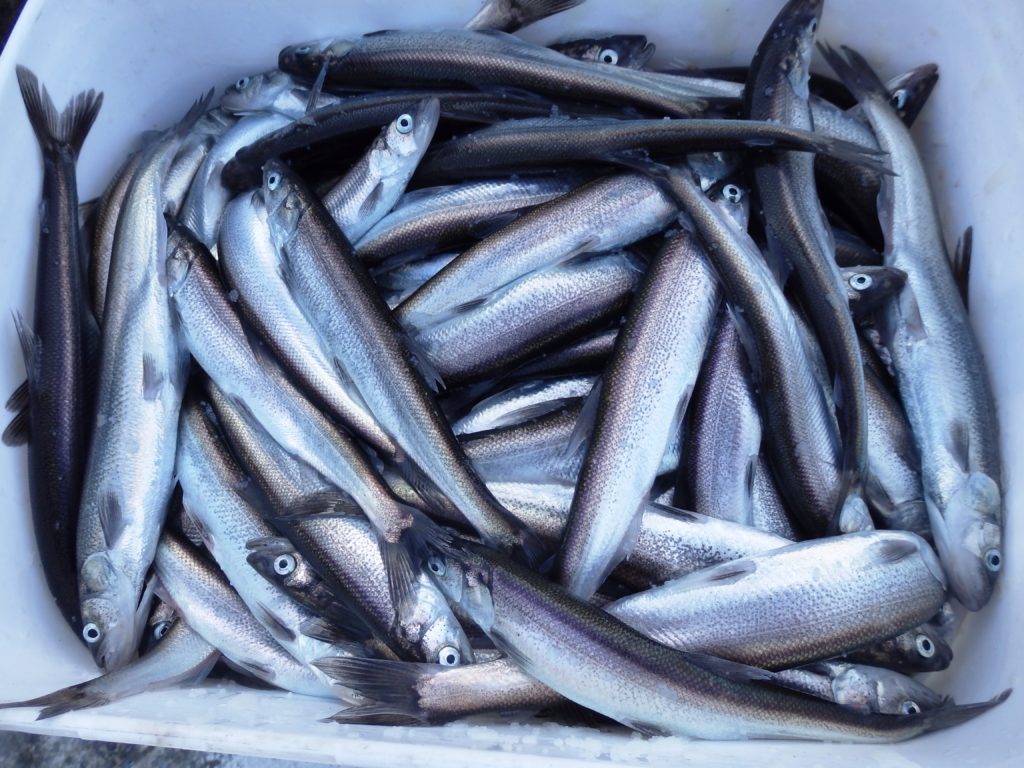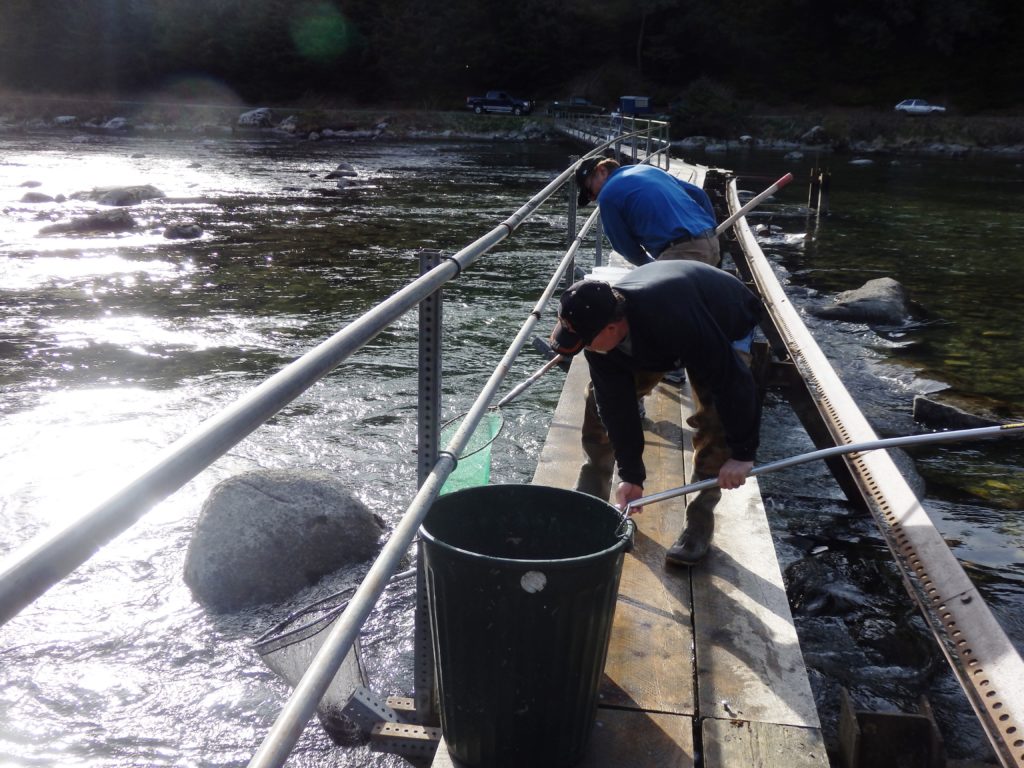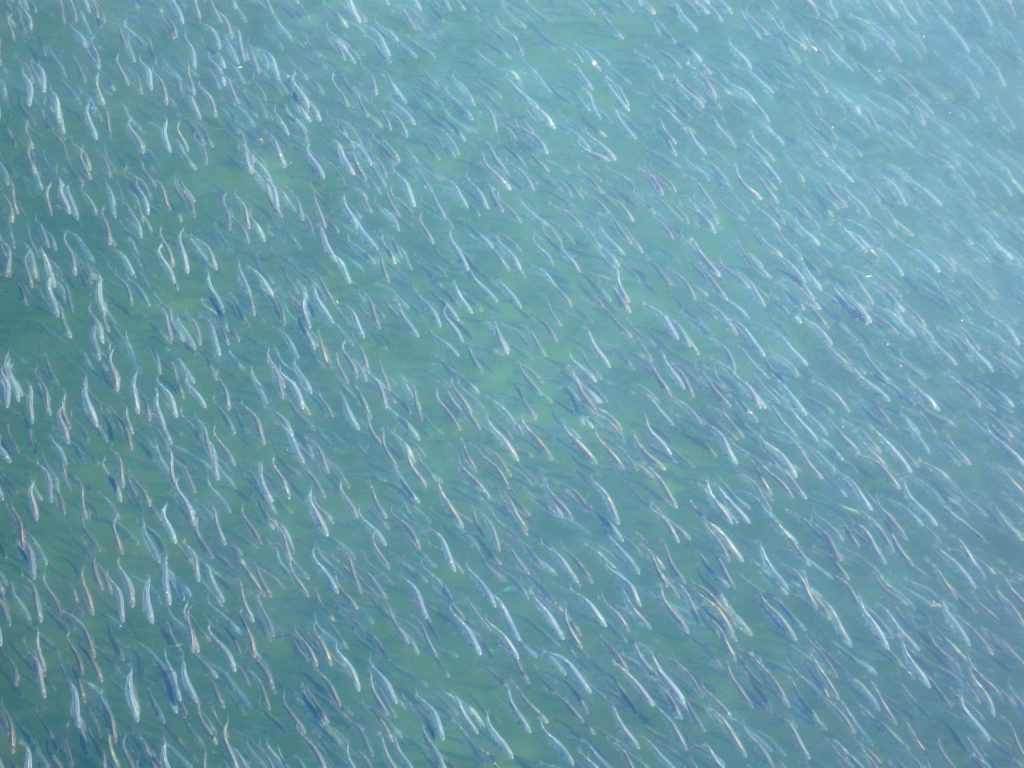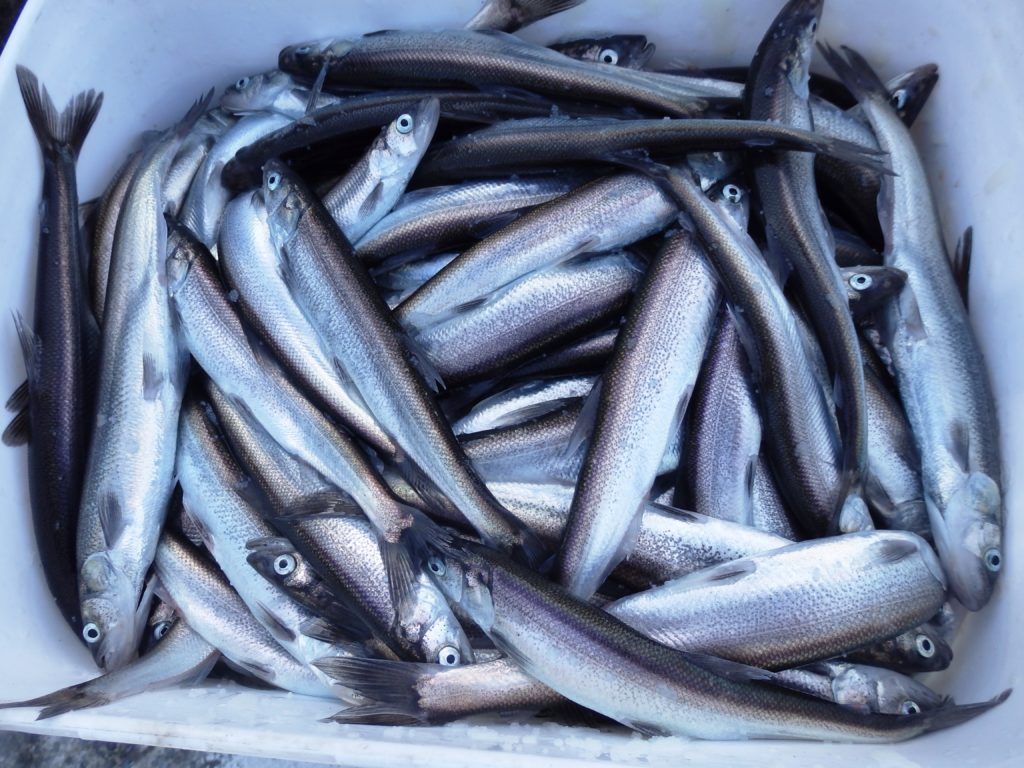
Hooligan caught Saturday 4/29 from the Chilkoot River. (Emily Files)
Haines and Klukwan fishermen are filling smokehouses and oil-rendering pits with variety of smelt called eulachon, or hooligan. Around this time each year, fishermen keep an eye out on nearby rivers, hoping the schools of silver fish will appear in strong numbers. But the hooligan runs are sometimes hard to predict, because there’s very little data. A collaboration of Haines organizations is working to change that.
“Oh [we’re] just looking at the run coming in now, looks like we got a pretty good run,” said Larry Sweet as he sat on the banks of the Chilkat River. “Looking at the sea lions coming through, just waiting for the hooligans to get a little closer to shore.”
Sweet’s young grandson roams the shore with a dip net, waiting for a school of hooligan to get close.
“Uh oh, he’s catching them by hand now,” Sweet laughs.
The river is so chock full of hooligan that you almost could fish with your bare hands.
Tim Ackerman stands on a bridge over the river, where people are dropping throw nets and pulling them back up full of fish.
“It’s pretty phenomenal. This is a a pretty good run here,” Ackerman said. “You can see the water black for quite a ways, the hooligan are so thick here.”

Dave Landry and Charlie David fish for hooligan on a weir over the Chilkoot River. (Emily Files)
Ackerman says this year could be the return of a massive run from six years ago, in 2011. It actually is possible to go back and look at data from the Chilkoot River, starting in 2010. But other rivers in the area are blank slates.
“A lot of these rivers there’s no data on,” said Meredith Pochardt with the Takshanuk Watershed Council.
Her organization is partnering with the Chilkoot Indian Association on a mission to monitor the region’s hooligan population. Oregon State University researcher Taal Levi is helping.
“Because [hooligan] are not commercially harvested there’s not a lot of federal or state-level effort to monitor them,” Levi said.
The push to study Northern Southeast hooligan is even more urgent because hooligan, or smelt, populations in California, Oregon and Washington are listed as threatened.
If hooligan were to decline in the Chilkat Valley, it would mean the loss of a culturally important subsistence fish.
“It’s really important that we keep this fish around for the next 10,000 years,” said Chilkoot Tribe fisheries director Ted Hart. “The oil is like gold up here. It’s what made Klukwan the hub of Tlingit culture, they were able to get very wealthy from the trade and the grease trails. It’s like liquid gold.”

Hooligan in the Chilkoot River Saturday 4/29. (Emily Files)
There are two pieces to the hooligan research. Since 2010, Takshanuk and the Chilkoot Tribe have run mark-recapture studies in the Chilkoot River. Three years ago, they started the second piece on the Chilkoot: environmental DNA. It involves collecting water samples a river and testing them for hooligan DNA. That provides a population estimate. Pochardt says eDNA has an advantage because it is less labor-intensive and expensive than other methods of research.
“If we found a more economical means to get the data, you could then sample across a larger region,” Pochardt said. “And that’s what we’re trying to do this year — add in additional streams.”
They’re expanding from one river, the Chilkoot, to ten. The eDNA research will now cover the Chilkat, Taiya, Ferebee, Katzehin, and Lace, Antler and Berners rivers in Berners Bay. They’re also doing a couple samples of the Mendenhall and Eagle rivers near Juneau.

Meredith Pochardt filters Chilkoot River water samples for eDNA testing. (Emily Files)
After this year, researchers will have a 10-river picture of the Northern Southeast hooligan population. If the study continues, it will shed light on the fish’s movement patterns and document changes in the population.
The research has just started, but Pochardt says the hooligan are already surprising them. She thought they might move south to north, starting in Berners Bay and working their way up to the Chilkoot. But the unpredictable fish appeared in both places the same day.









